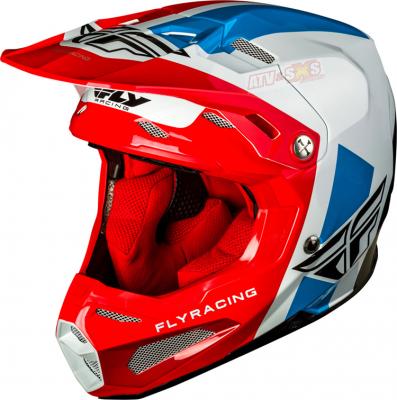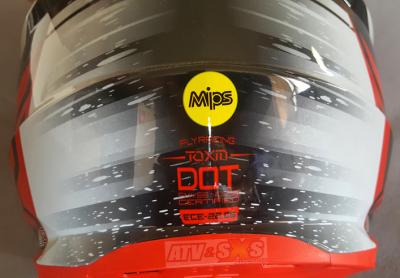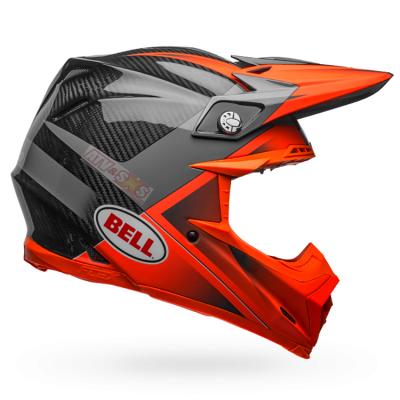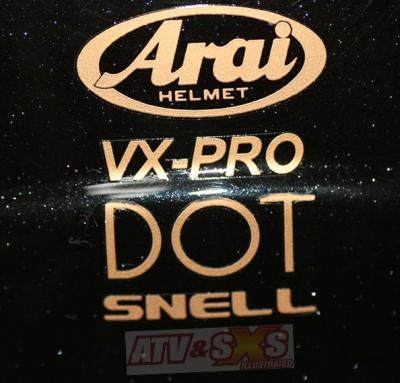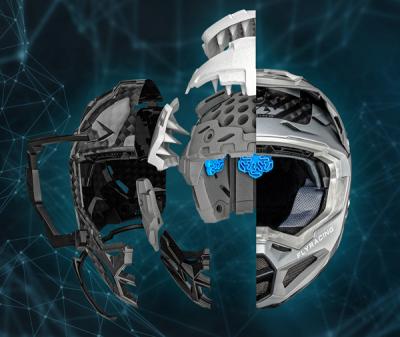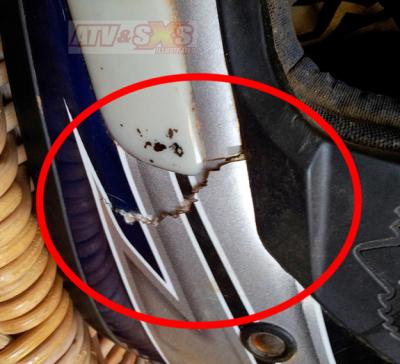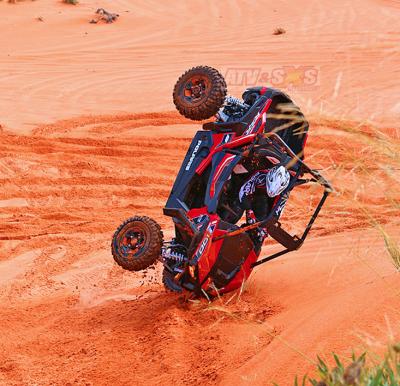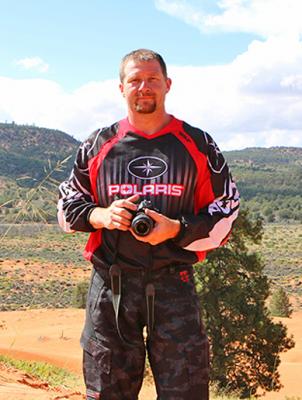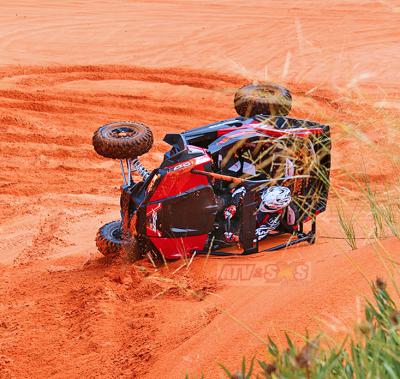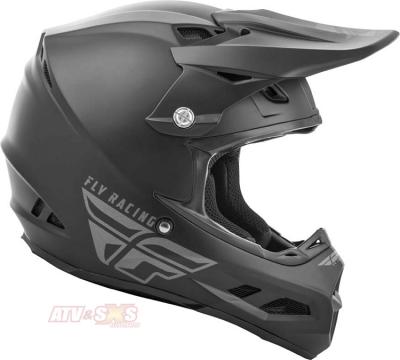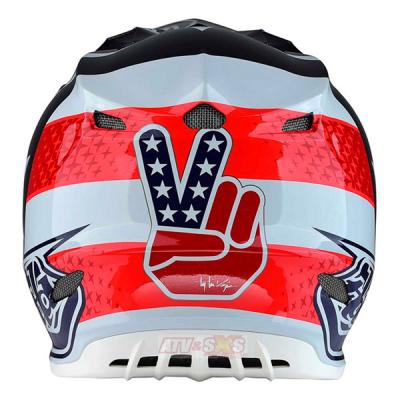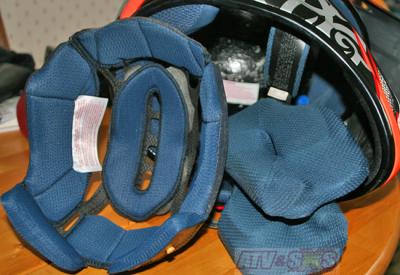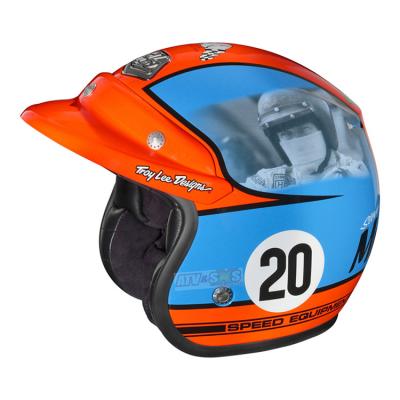Everyone knows the value of wearing a helmet. It’s the most important piece of equipment you absolutely must have for any ATV and Side x Side adventure, and yes, we include Side x Sides because unpadded roll bars are just as hard as rocks when your head makes contact with one. Whether you’re strapped inside a roll cage or perched on an ATV, a proper fitting, quality helmet can be life saving should your world turn upside down. We’ll let you know what to look for in a new helmet, and how to fit it properly.
WHAT TYPE OF RIDING?
The first thing to determine is what type of riding you like to do. While most ATV riders will use their ATV for both a little work and play, we race often, trail ride, and even venture deep into the woods to our favorite hunting and camping spot. For our more aggressive riding we prefer maximum protection with a high-quality motocross lid. If we’re simply venturing out to the campsite, we’ll probably wear something that we don’t mind getting a few branch scratches on, but regardless of the activity, we’ll always be wearing a helmet. EVERY rider has experienced those little 5 mph incidents that can really catch you off guard. Even they can cause serious injury to your brain and face. Most helmets these days are what is called “full face” since they feature a full chin bar. There are still open face helmets available but for the extra protection its best to get a full-face version
QUALITY CERTIFICATION STANDARDS – SNELL and DOT
The old saying “if you’ve got a 30-dollar head buy a 30-dollar helmet” is funny. Crashes aren’t. The one thing that you must absolutely have in any helmet is certification by a government recognized testing standard. This is a specification that certifies a minimum protection standard, and is usually a stamp or sticker found at the rear of the helmet. The highest standard available is called “SNELL”, and top of the line helmets meet this standard. The other approved standard is called “DOT” (Department of Transportation), and that is an acceptable standard of quality as well. Some helmets actually meet both. Be sure whatever you buy bears one or both safety standards.
SHELL GAME
Absorbing the energy of an impact is what the helmet is designed to do. Helmets today are made from several different materials such as plastic, fiberglass, Kevlar, or carbon fiber. At the high end of the scale are the carbon fiber or Kevlar formed helmets. These materials give the helmet immense strength and durability, and they are almost always the lightest available. For that reason, racers love them but the drawback is they are also the most expensive. Next up are the fiberglass shell helmets and they are also very strong. They weigh a little more than the carbon/Kevlar units, but they do a good job of protecting your head. The most basic helmets have a plastic shell, and since this type is easiest to mass-produce, they are the least expensive. Pick the best you can from a trusted manufacturer. Your dealer will be happy to offer advice and can show you the difference. They’re not going to keep a poor-quality helmet on their showroom shelf. The one thing common to all helmets is the foam liner on the inside, which is there to absorb impact.
Hard impacts are what all helmets are designed to protect you from, and just as vehicles have crumple zones that are designed to dissipate energy, so do helmets. It is possible that even a new helmet could be destroyed with one hard impact, but better that than your head! Should you take a hard crash, and we all do sometimes, be sure to inspect your helmet on the outside for cracks, and on the inside check to see that the foam liner has not been crushed. If either is compromised it’s time to replace it. Yes, it will cost you a few bucks to replace a damaged helmet, but we would rather spend the cash than drink every dinner through a feeding tube the rest of our life.
GET THE PROPER SIZE
When it comes time to pick a new helmet size does indeed matter. Just as you would think a size 12 shoe would be size 12 from all manufacturers, helmets vary between manufacturers as well. It has been our experience that some of the new brands developed in China tend to run a little small. The best place to determine size and to inspect for quality is at your local dealer. Dealers usually have a rather large helmet display, and they’ll be happy to help you pick out one and fit it correctly. They aren’t going to be too excited though if your intention is to then go home and find one on eBay. When trying on the new helmet make sure it fits securely. Our test is to turn your head quickly. If the helmet moves on its own it is a little too big. If the padding squeezes your cheeks and gives you that chipmunk look, it’s too tight. You want the cheek pads and all the padding to be in firm contact with your head, and yet enough room left to speak freely and be comfortable. Another item to check is the chinstrap. You want to make sure it’s long enough and easy to find and fasten.
Manufacturers like to talk about extra features in nearly everything, and the two things we look for in a helmet is a vent system and a removable liner. Vents are important for summer rides, and many helmets even allow you to close off the vent in colder weather. The other big item we look for in a helmet is a removable liner. It goes without saying that after a few dusty, sweaty rides, our liner needs a wash job, and it’s much nicer sticking your head back inside a fresh helmet. When we wash the liner, we usually rinse the inside of the helmet as well. Soap and warm water will do the trick. Never use a more aggressive cleaner on your helmet! They can break down the protective shell of the helmet or the impact energy absorbing foam liner.
KIDS HELMETS – NO HELMET MEANS NO RIDING!
If you are buying a helmet for a kid the same sizing techniques are used. This is not something to just let them “grow into”. Be 110% sure they have a helmet that fits them correctly. SNELL announced they are developing a new youth helmet standard, and until now all kids helmets were based on scaled down adult models. A new standard for youth riders will be very good news. Until that standard is accepted it’s your job to make sure your kids enter the great world of ATV riding prepared with the proper safety gear.
NOBODY LOOKS GOOD IN THE HOSPITAL – WEAR A HELMET!
We see plenty of riders who pick up different tires, a winch, and all manner of accessories but we rarely see them with a new helmet. Maybe it’s because a new helmet won’t make you go any faster, tow extra weight, or cross deeper water, but when it’s your head up against a rocky trail or a roll bar it’s a little late to change your buying priorities. Save yourself the agony later and buy a quality helmet now.


